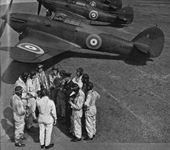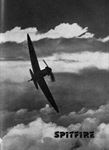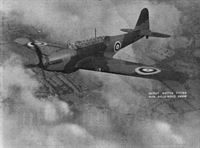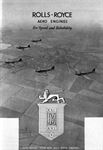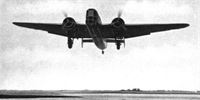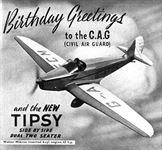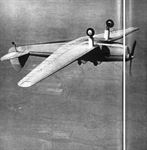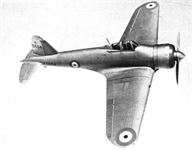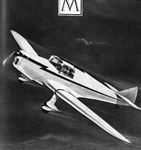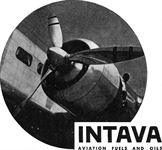Фотографии
-
Регистрационный номер: L1559 Самолёты на фотографии: Hawker Hurricane - Великобритания - 1935
-
Самолёты на фотографии: Supermarine Spitfire - Великобритания - 1936
-
Регистрационный номер: K7558 Самолёты на фотографии: Fairey Battle - Великобритания - 1936
-
Самолёты на фотографии: Fairey Battle - Великобритания - 1936
-
The standard Royal Air Force twin-engined trainer, the Airspeed Oxford, flying above Portsmouth Airport. In addition to the large number going into service in Great Britain, Oxfords are also being supplied to New Zealand.
Самолёты на фотографии: Airspeed Oxford / AS.10 - Великобритания - 1937
-
THE FOKKER T.5: with two “Bristol” Pegasus engines. A mid-wing cantilever monoplane, for use as a long-range bomber or battle-plane. Of metal and wood construction, with retracting undercarriage, twin rudders, and nose and tail turrets. Armament includes 6 gun positions (1 cannon). Maximum speed: 259 m.p.h. (417 km/h) at 13,120 ft. (4000 m.) In series production by N. V. Nederlandsche Vliegtuigenfabriek (Fokker), Amsterdam.
Самолёты на фотографии: Fokker T.V - Нидерланды - 1937
-
Регистрационный номер: ZK-AEW Самолёты на фотографии: De Havilland Dragon Rapide / Dominie / D.H.89 - Великобритания - 1934
-
Самолёты на фотографии: De Havilland Dragon Rapide / Dominie / D.H.89 - Великобритания - 1934
-
Регистрационный номер: G-AFCM Самолёты на фотографии: Tipsy B / BC - Бельгия - 1937
-
Регистрационный номер: VP-FLO, VP-FLU, VP-FLY Самолёты на фотографии: De Havilland Dragonfly / D.H.90 - Великобритания - 1935
-
Самолёты на фотографии: De Havilland Moth Minor / D.H.94 - Великобритания - 1937
-
Following two years of development and test, and created out of the company’s accumulated experience of thousands of Moth aircraft in world-wide use, The de Havilland Aircraft Co., Ltd., announces the Moth Minor, a light aeroplane for training and personal ownership, of robust construction and superior performance, and combining exemplary flying qualities and ease of piloting with a new low level of first and running costs. Deliveries will commence in the Spring of 1939. For sheer reliability the Moth Minor is fitted with a Gipsy engine, the new 90 h.p. GIPSY MINOR
Самолёты на фотографии: De Havilland Moth Minor / D.H.94 - Великобритания - 1937
-
Регистрационный номер: K5604 THE GLOSTER MONOPLANE FIGHTER: with “Bristol” Mercury engine. A single-seat, multi-gun, day and night fighter of low-wing, metal, stressed-skin construction. Fitted with retracting undercarriage, two-position 3-bladed airscrew, and fully-enclosed and heated cockpit. Span, 38 ft.; length, 32 ft.; height, 10 ft.; wing area, 230 sq. ft. An extremely fast and manoeuvrable machine, of which no performance details are available for publication. Built by the Gloster Aircraft Co. Ltd.
Самолёты на фотографии: Gloster F.5/34 - Великобритания - 1937
-
Самолёты на фотографии: Miles Monarch / M.17 - Великобритания - 1938
-
Регистрационный номер: G-ADVD Самолёты на фотографии: Short Empire / S.23 - Великобритания - 1936
-
Самолёты на фотографии: Bloch MB.220 - Франция - 1936
-
Самолёты на фотографии: Supermarine Southampton / Solent - Великобритания - 1925
-
Регистрационный номер: G-AASE Самолёты на фотографии: Supermarine Air Yacht - Великобритания - 1930
Статьи
- Flight
- Flight Advertisements
